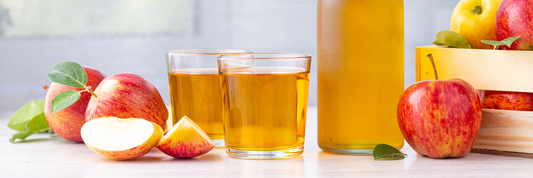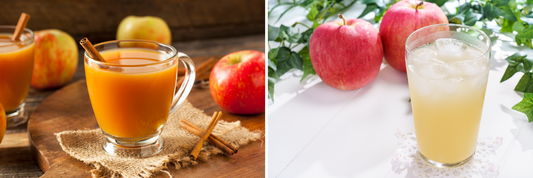Rice flour has become an essential ingredient for anyone exploring gluten-free baking, Asian cuisine, or healthier cooking alternatives. Unlike wheat flour, rice flour is naturally gluten-free, making it safe for people with celiac disease or gluten sensitivity. Its versatility allows it to be used in everything from crispy fried dishes and thickened sauces to soft, chewy desserts and gluten-free bread.
Whether you are a home baker, café owner, or F&B entrepreneur, understanding the different types of rice flour, their unique properties, and how to use them correctly can dramatically improve the texture, taste, and appearance of your dishes. In this ultimate guide, we will cover everything you need to know about rice flour: types, nutrition, uses, recipes, substitutions, storage tips, and more, so you can master this ingredient in your kitchen.
-
Oat Flour: The Complete Guide to Nutrition, Benefits, and Baking Uses (2025)
-
Coconut Flour: The Ultimate Guide for Café, Bakery & F&B Businesses
-
Almond Flour: The Ultimate Guide for F&B Businesses in 2025
What Is Rice Flour?

Rice flour is a fine powder made by grinding rice grains. Naturally gluten-free, rice flour is a staple ingredient in gluten-free baking and Asian cuisine. Unlike wheat flour, it contains no gluten, making it safe for people with celiac disease or gluten sensitivity. Rice flour comes in different varieties white rice flour, brown rice flour, and sweet (glutinous) rice flour each with its own texture, flavor, and uses in cooking and baking.
Rice Flour vs Rice Starch
While rice flour contains some protein, fiber, and nutrients, rice starch is a purified carbohydrate mainly used as a thickening agent or in industrial food production. Rice flour, on the other hand, is versatile and can be used in baked goods, batters, noodles, and desserts.
How Rice Flour Is Made
Rice flour is produced by milling dry rice grains into a fine powder. The type of rice determines the flour’s characteristics:
- White rice flour: Made from polished rice grains, offering a smooth texture and mild flavor.
- Brown rice flour: Made from whole-grain rice, including the bran, giving it more fiber and nutrients.
- Sweet rice (glutinous) flour: Made from sticky rice grains, ideal for chewy desserts like mochi.
Types of Rice Flour

Understanding the types of rice flour helps achieve the desired results in recipes.
White Rice Flour
White rice flour has a mild taste and soft texture, making it ideal for gluten-free cakes, muffins, pancakes, and cookies. It is often blended with other starches to improve structure in baking.
Brown Rice Flour
Brown rice flour retains the bran layer, giving it higher fiber content, vitamins, and minerals. It has a nuttier flavor and slightly denser texture. It’s great for healthy breads and muffins, but usually requires binders like xanthan gum for improved elasticity.
Sweet Rice Flour / Glutinous Rice Flour
Also known as mochiko, sweet rice flour becomes sticky when cooked, creating a chewy texture. Perfect for mochi, rice cakes, dumplings, and Asian desserts. Note: “glutinous” refers to stickiness, not gluten content.
Specialty Rice Flours
Other specialty types include black rice flour, red rice flour, parboiled rice flour, and rice bran flour, each providing unique flavor, color, and nutrition benefits.
Rice Flour Nutrition & Health Benefits
Rice flour offers nutritional benefits, though these vary by type.
Calories, Macronutrients, and Fiber
- White rice flour: ~366 calories per 100g, mainly carbohydrates, low in protein.
- Brown rice flour: Higher fiber (~3–4g per 100g) and rich in magnesium, manganese, and B vitamins.
Gluten-Free & Allergy Considerations
Rice flour is naturally gluten-free, making it safe for celiac patients. However, cross-contamination can occur in manufacturing, so always check labels.
Glycemic Index
White rice flour has a high glycemic index, which can spike blood sugar. Brown rice flour has a lower glycemic index, making it a better choice for diabetics or people monitoring sugar intake.
Gluten-Free Cupcakes for Bakeries: Moist, Fluffy & Profitable Recipes

How to Use Rice Flour — Cooking & Baking Applications
Rice flour is incredibly versatile, suitable for baking, frying, thickening, and traditional Asian recipes.
Baking with Rice Flour
- Cakes & Muffins: Use rice flour with tapioca starch, potato starch, or almond flour for better structure.
- Cookies & Pancakes: Rice flour adds a soft texture; combine with coconut or almond flour for chewiness.
Frying & Batters
Rice flour creates crispy coatings for fried chicken, tempura, and fish. It absorbs less oil than wheat flour, giving a lighter crunch.
Thickening Agent
Rice flour can replace cornstarch as a gluten-free thickener for sauces, gravies, and soups. Cook on medium heat to avoid lumps.
Asian Staples
Essential for noodles, dumplings, rice cakes, and steamed desserts in many Asian cuisines.
Gluten-Free Blends
Combine rice flour with tapioca starch, potato starch, or xanthan gum to replace wheat flour in gluten-free bread, cakes, and pancakes.
Rice Flour vs Other Flours

Choosing the right flour for your recipe is crucial.
Rice Flour vs Wheat Flour
Rice flour lacks gluten, which gives structure in baked goods. For bread and cakes, rice flour is best combined with other starches and binders to achieve a soft texture.
Rice Flour vs Almond & Coconut Flour
- Almond flour: high in protein and fat, gives moist texture.
- Coconut flour: high in fiber, absorbs more liquid, needs extra eggs or liquid.
Rice Flour vs Tapioca / Cornstarch
- Tapioca starch: purely thickening, gives elasticity.
- Cornstarch: thickens without flavor.
- Rice flour: versatile for both baking and frying, with subtle flavor.
How to Make Rice Flour at Home
Making rice flour at home is straightforward and ensures freshness.
Equipment Needed
- Grain mill, blender, or high-speed grinder.
- Fine sieve for superfine flour.
Step-by-Step Process
- Rinse rice and let it dry completely.
- Grind rice in small batches until fine.
- Sift through a fine mesh to ensure uniform texture.
Storage
Store rice flour in an airtight container in a cool, dry place. Brown rice flour can be refrigerated or frozen to extend shelf life.
Buying the Best Rice Flour
Labels & Quality
-
Look for single-ingredient rice flour with no additives.
-
Superfine rice flour provides a smoother texture for cakes and batters.
Common Rice Flour Problems & Fixes

- Grittiness in baked goods: Sift rice flour or blend with starches.
- Crumbly gluten-free bread: Add xanthan gum or psyllium husk for elasticity.
- Dense cakes: Adjust hydration and mix rice flour with starches for better texture.
Recipes Using Rice Flour
Rice Flour Pancakes
Soft and gluten-free breakfast option; combine rice flour, eggs, milk, and a pinch of baking powder.
Mochi / Sweet Rice Cake
Chewy dessert using sweet rice flour, sugar, and coconut milk.
Crispy Fried Chicken
Rice flour creates a light and crunchy coating, perfect for fried chicken or fish.
Gluten-Free Rice Flour Bread
Blend rice flour with tapioca starch, potato starch, and xanthan gum for a soft, elastic loaf.
Sustainability & Sourcing
- Rice agriculture footprint: Moderate water usage depending on region; choose sustainable sources.
- Organic & Non-GMO rice flour: Ideal for eco-conscious buyers.
Gluten-Free Flour: Types, Benefits, and How to Use It for Perfect Baking Results
FAQs About Rice Flour
What is rice flour made from?
Rice flour is ground rice grains white, brown, or glutinous and is naturally gluten-free.
Is rice flour gluten free?
Yes, but check for cross-contamination if you have celiac disease.
How do you make rice flour at home?
Use a grain mill or blender, grind rice in batches, and sift for superfine texture.
What is the difference between rice flour and glutinous rice flour?
Glutinous rice flour is sticky and ideal for chewy desserts; regular rice flour is less sticky.
Can I substitute rice flour for wheat flour?
Yes, with adjustments. Combine with starches and binders for better structure.
Which rice flour is best for frying?
Superfine white rice flour or sweet rice flour produces the crispiest coating.
How should I store rice flour?
Airtight container in a cool, dry place; refrigerate or freeze brown rice flour for longevity.
Conclusion
Rice flour is more than just a substitute for wheat flour it’s a versatile, gluten-free ingredient that can elevate your cooking and baking. From crispy fried dishes, fluffy gluten-free breads, to chewy mochi desserts, understanding the types of rice flour and how to use them correctly can make a huge difference in your results.
Whether you choose white rice flour for its mild texture, brown rice flour for its added fiber, or sweet rice flour for sticky, chewy desserts, rice flour opens up a world of culinary possibilities. By learning how to store it, blend it with other starches, and apply it in different recipes, you can confidently create delicious, gluten-free, and healthier dishes.







